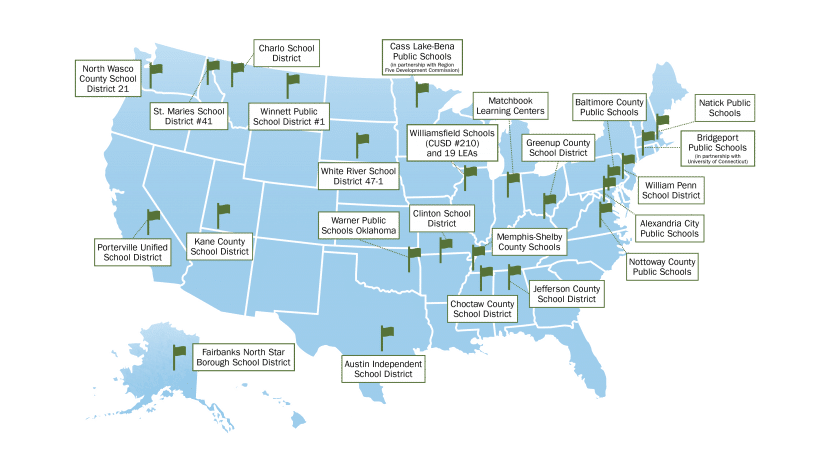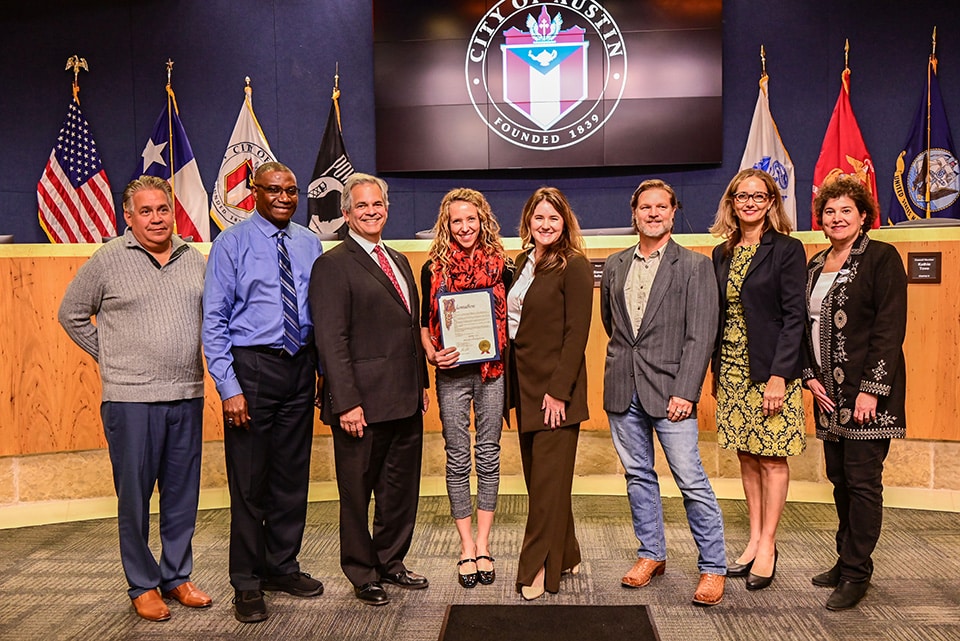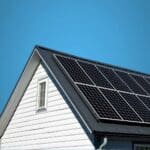The U.S. Department of Energy (DOE) launched the Renew America’s Schools Program in 2022, a grant program created in the Bipartisan Infrastructure law that will distribute $500 million over five years to nationwide K-12 schools for energy upgrades. This historic funding will help America’s public schools get critical funding to lower utility costs, reduce emissions, and create healthier learning environments. The new program garnered unprecedented interest and engagement. The first round of funding received 200 applications across 44 states proposing $1.62 billion in infrastructure improvements and investments in schools.
In June 2023, the DOE awarded $182.5 million to 24 K-12 public schools across the country to support the implementation of clean energy improvements. Just over 40% of the 24 awardees plan to install solar, while others plan to fully electrify their buildings and enhance energy efficiency.

In March 2024, the DOE announced the 2024 Renew America’s Schools Prize, a $180 million investment in K-12 public schools across the country. This three-phase opportunity will help districts build capacity, perform energy audits, and plan/implement energy improvement projects across a portfolio of school facilities. The submission deadline for Phase 1 applications is June 13, 2024 at 2pm PDT.
These three 2023 Renew America’s Schools grant recipient stories provide inspiration and project ideas for the 2024 application round.
Williamsfield Schools, Illinois
Williamsfield Schools, a rural Illinois school district of just under 300 students, leads a coalition of 20 Illinois school districts to install and deploy functional microgrids on each district campus. The coalition began as a way to collectively fund electric school buses and charging infrastructure. When the Renew America’s School Grant applications opened, the coalition saw an opportunity to bring energy resilience, community health, and financial savings to their community.
“This is an opportunity that doesn’t come to school districts all that often,” noted Superintendent Tim Farquer of Williamsfield Schools and SLICE Network Member. “I see no drawback in applying for these funds.”
They requested nearly $15 million in federal funds to bring at least 1 electric school bus to each district, a total of 22 GWh of solar production, 10MW of solar storage during peak demand, and 8MW of mobile emergency backup power. With these technologies, each site will serve as an emergency shelter for their community. Read more about Williamsfield Schools plans here.

Williamsfield Schools received their first fleet of electric school buses, funded by the Renew America’s Schools Grant, in December 2023.
Austin Independent School District, Texas
Austin Independent School District (AISD) produces more solar power than all other Texas school districts combined, with 14 solar schools producing 2MW of energy. They will soon be adding 14 more schools to their portfolio, doubling their solar energy production, and achieving net-zero energy schools in 16 disadvantaged communities.
“Renewable energy helps you save money in the long run. It decreases our energy costs. Utility costs are the second-highest expense behind salaries. And lowering our operating expenses for energy means increased financial stability for the school district,” said Darien Clary, Austin ISD sustainability director.
The new solar installations, paired with energy efficiency measures, should save $1.2 million a year in reduced energy costs. Additionally, the new solar schools will serve as resilient community centers in times of energy shortages. Moreover, the district plans to use at least 25% of the budgeted dollars investing in minority and women-owned small local businesses. Read more about AISDs plans here.

The City of Austin Mayor and Council proclaims AISD Solar-Powered Facilities Day in recognition of AISD’s achievements in solar power and renewable energy.
Clinton School District , Arkansas
Clinton School District in Arkansas is identified by the DOE as a Disadvantaged Community with 100% of their students receiving Free and Reduced Lunch. With a backlog of deferred maintenance, the school district is using federal funds to provide energy upgrades – LED lightning, HVAC, building envelope, etc. – to generate cost savings. Those savings will provide the revenue to address the deferred maintenance in their buildings.
Additionally, the district plans to install a 1MW solar array that will offset 100% of the district’s energy needs, generating even more cost savings for the district. The district plans include developing Career and Technical Education (CTE) and STEM career curricula to provide students with hands-on learning about the installation and maintenance of solar arrays. Learn more about Clinton School District’s plans here.















